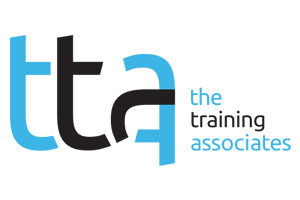Artificial intelligence (AI) and machine learning are transforming cybersecurity by enhancing threat detection, automating routine tasks and identifying vulnerabilities. Adoption of these tools is rising rapidly across the industry.
However, while AI offers powerful capabilities, it is not a complete solution. Human judgment, intuition and critical thinking remain essential to address the complexities of modern cyber threats. For learning and development (L&D) professionals, this presents an opportunity to design training programs that bridge the gap between AI’s strengths and human expertise, ensuring organizations are well-equipped to combat evolving risks.
The Human Element in Cybersecurity
Human error remains one of the most common causes of cybersecurity incidents, revealing a critical knowledge gap that L&D professionals must address. Effective training programs should not only leverage AI’s capabilities but also enhance employees’ ability to recognize and respond to threats that AI may miss. By fostering critical thinking and situational awareness, organizations can reduce vulnerabilities and strengthen their security posture.
Limitations of AI in Cybersecurity
AI excels at analyzing vast datasets and identifying patterns, making it highly effective for detecting known threats and anomalies. For instance, IBM research indicates that AI-driven automation saves companies millions by reducing downtime and financial losses from cyberattacks. However, AI has notable limitations that necessitate human intervention.
These limitations include:
● Social engineering: To date, AI has struggled with detecting sophisticated social engineering tactics like phishing, which exploit human psychology. Phishing remains a leading cause of breaches, making it essential for employees to spot suspicious communications.
● Contextual understanding: AI may misinterpret context, such as flagging a legitimate user accessing a system from an unusual location as suspicious while a human might know the user is on a pre-approved working vacation. This nuance is critical to avoid false positives and maintain operational efficiency.
● Physical security gaps: AI cannot monitor physical security risks, like an employee pocketing a thumb drive or leaving devices unsecured. Human observation is essential to address these vulnerabilities.
● Adversarial risks: AI systems are susceptible to attacks like data poisoning, where attackers manipulate training data to deceive the model. Human oversight is crucial to mitigate these risks.
These limitations emphasize the need for comprehensive training that teaches employees how to augment AI’s capabilities with human judgment.
Why Human Intuition and Critical Thinking Matter in AI-Era Security Training
As AI becomes increasingly integrated into cybersecurity systems, training must evolve beyond basic protocols to foster human intuition and critical thinking. These skills are irreplaceable for spotting anomalies, interpreting context and making ethical decisions. L&D professionals can implement the following strategies to build a workforce that effectively collaborates with AI, drawing on resources like specialized training programs to enhance their approach.
1. Scenario-Based Learning
Real-world simulations allow employees to practice questioning, verifying or supplementing AI-generated alerts, encouraging them to evaluate context, risk and intent. For example, a simulation might involve an AI flagging an unusual login attempt, but the employee, aware that a colleague is traveling, uses contextual knowledge to make an informed decision.
Given that phishing remains a top threat vector, simulations can replicate these scenarios, helping employees identify threats AI might miss. AI-powered tools can enhance these simulations by creating realistic attack scenarios.
Implementation tips for L&D professionals:
- Partner with cybersecurity experts to design scenarios reflecting current threats.
- Use AI-driven simulation platforms to create interactive training modules.
- Incorporate feedback sessions to assess decision-making and provide coaching.
2. Teach Pattern Disruption
AI relies on patterns, so training should focus on building intuitive awareness and spotting irregularities that AI might overlook. For instance, an employee might notice a request for sensitive information from an unusual email address, even if AI doesn’t flag it. In physical security, humans can detect behaviors like an employee pocketing a thumb drive — actions AI cannot monitor. Case studies of breaches where AI failed to detect anomalies can illustrate the importance of human intervention.
Implementation tips for L&D professionals:
- Highlight real-world case studies of breaches where human oversight was critical.
- Train employees to recognize subtle behavioral or physical security anomalies.
- Encourage reporting of suspicious activities, even if not flagged by AI.
3. Encourage Reflection Over Reaction
Post-incident reviews help employees analyze their decisions, fostering ethical and strategic thinking that AI lacks. After a simulated attack, discussions on why certain actions were taken build internal frameworks for better judgment. This reflective approach enhances decision-making over time, ensuring employees can respond thoughtfully to complex threats.
Implementation tips for L&D professionals:
- Conduct debrief sessions after simulations to review decision-making processes.
- Use examples of ethical dilemmas in cybersecurity to guide discussions.
- Encourage employees to document their reasoning during training exercises.
4. Integrate Cross-Disciplinary Thinking
Blending insights from psychology, sociology and ethics into training enhances complex problem-solving. Understanding psychological tactics used in social engineering, such as emotional manipulation, helps employees recognize techniques AI might miss. This interdisciplinary approach equips employees to make informed decisions beyond data-driven insights, addressing the human elements of cybersecurity.
Implementation tips for L&D professionals:
- Collaborate with experts in psychology or ethics to design training modules.
- Include workshops on social engineering tactics and countermeasures.
- Encourage consideration of broader ethical implications in security decisions.
5. Pair AI with Human Checkpoints
Workflows where trained employees review AI decisions reinforce that AI supports, rather than replaces, human judgment. For example, high-risk AI alerts can be double-checked by a security officer who provides context and makes the final call. This ensures AI handles initial detection while humans address nuanced decisions, reducing errors and enhancing security.
Implementation tips for L&D professionals:
- Develop workflows that integrate human checkpoints into security processes.
- Train employees to interpret and validate AI-generated alerts.
- Use real-world examples to demonstrate the value of human-AI collaboration.
These strategies, supported by reputable training programs, empower employees to complement AI’s strengths, creating a robust defense against cyber threats. By integrating AI-driven tools and human expertise, L&D professionals can ensure their training programs are both innovative and effective.
L&D professionals play a pivotal role in designing training programs that equip employees to work alongside AI systems effectively. As cyber risks grow in complexity, the synergy between AI and human expertise will be key to maintaining robust defenses.



